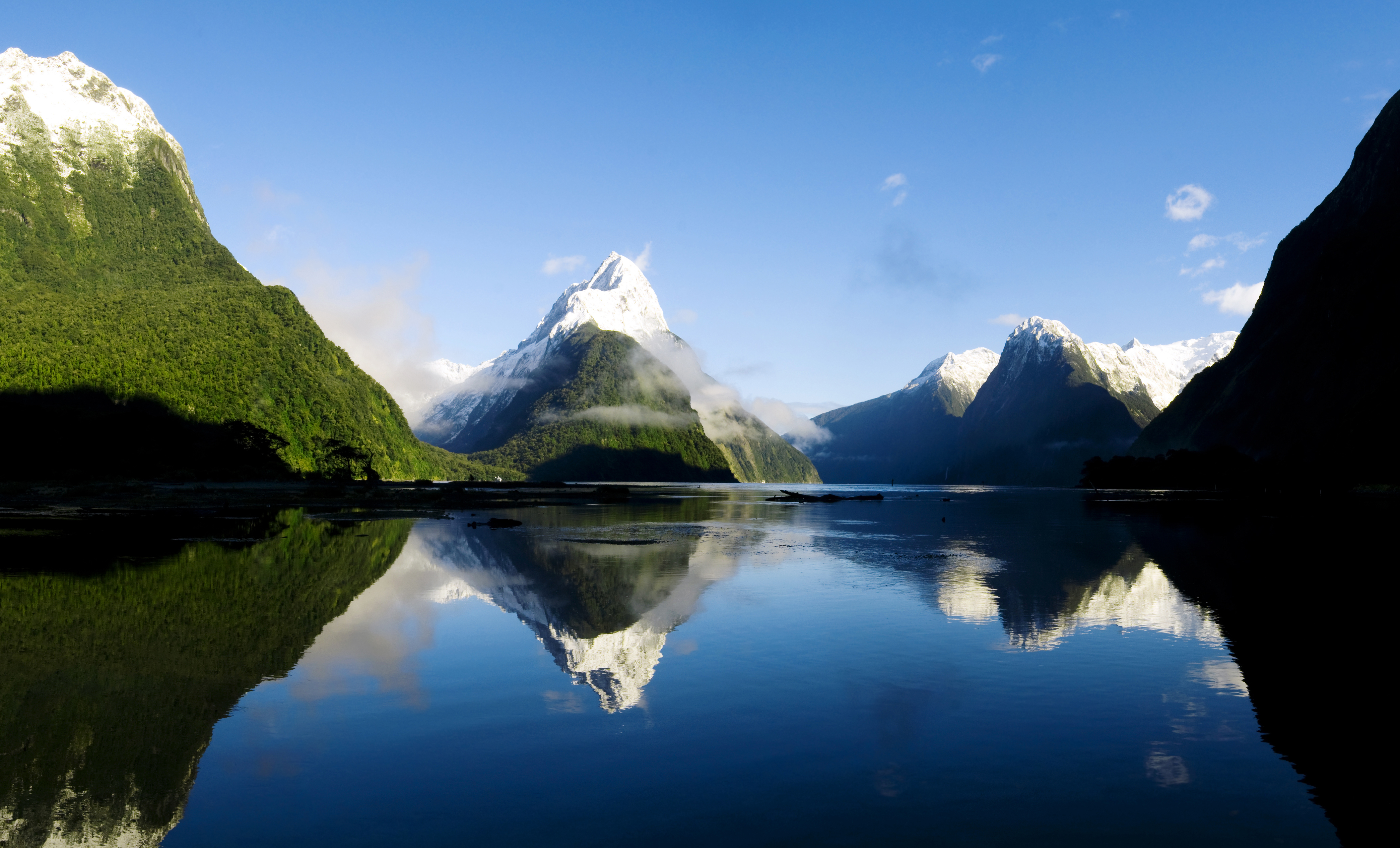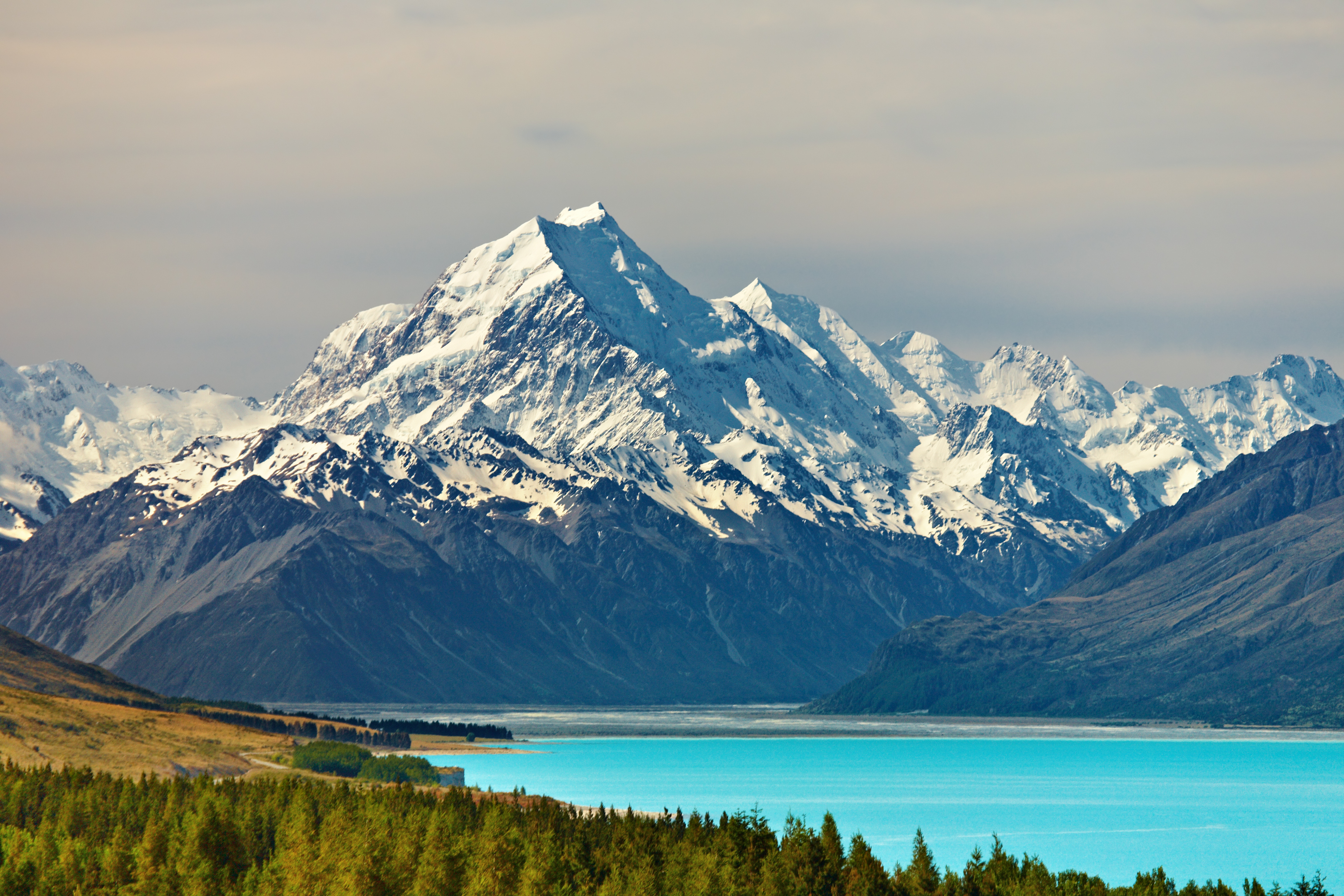South Island (pop. 1,104,537) is the larger but less populated of New Zealand’s two main islands. The North Island is the other. The South Island is known for the rugged beauty of its mountains and glaciers, which attract hikers, skiers, and adventurers from all over the world.

The traditional Māori << MOW ree or MAH ree >> name for the South Island, Te Waipounamu << teh wy poh nah moo >> , means the greenstone waters. Greenstone, a form of jade, was used by New Zealand’s native Māori people to make sacred objects.
The land.
Cook Strait, which is about 16 miles (26 kilometers) wide at its narrowest point, separates the North and South islands. The South Island has an area of 58,385 square miles (151,215 square kilometers).
Much of the South Island is covered with mountains in the Southern Alps/Kā Tiritiri o te Moana range. One of these mountains, the 12,218-foot (3,724-meter) Aoraki << OW rahk ee >> , also known as Mount Cook, is New Zealand’s highest point. Much of the west coast receives more than 80 inches (200 centimeters) of rain per year.

Fiordland National Park, in the southwestern corner of the South Island, is New Zealand’s largest national park. It is home to scenic Milford Sound and the 33-mile (53.5-kilometer) Milford Track, a hiking trail sometimes called the “finest walk in the world.” 

The Canterbury Plains lie along the east-central coast of the South Island. These plains are home to most of New Zealand’s sheep farms, as well as farms where such grains as barley and wheat are grown. A number of farms can also be found on the plains and rolling hills of the southeast portion of the South Island.
History.
A Polynesian people known as Māori were the first settlers of New Zealand. Around A.D. 1200, they sailed to New Zealand from other islands in the Pacific Ocean. In 1792, a group of seal hunters built the first European settlement in New Zealand on Anchor Island in Dusky Sound. Further European settlers began arriving in New Zealand soon after.

New Zealand became a British colony in 1840. The New Zealand Company, a British association that promoted colonization, depended on the South Island for its good grazing land for sheep. By the 1850’s, about a third of New Zealand’s population lived on the South Island. A series of gold rushes in the 1860’s brought thousands of prospectors to the South Island’s Marlborough, Otago, and Westland areas.
The South Island developed rapidly. Most of the South Island was acquired from Māori in 1848. Much of the land has since been returned to the Ngāi Tahu tribe through the claims and settlement process of the Waitangi Tribunal. This tribunal was established in the 1970’s to investigate claims involving breaches (violations) of the Treaty of Waitangi, under which the British government gained control of Māori land.
